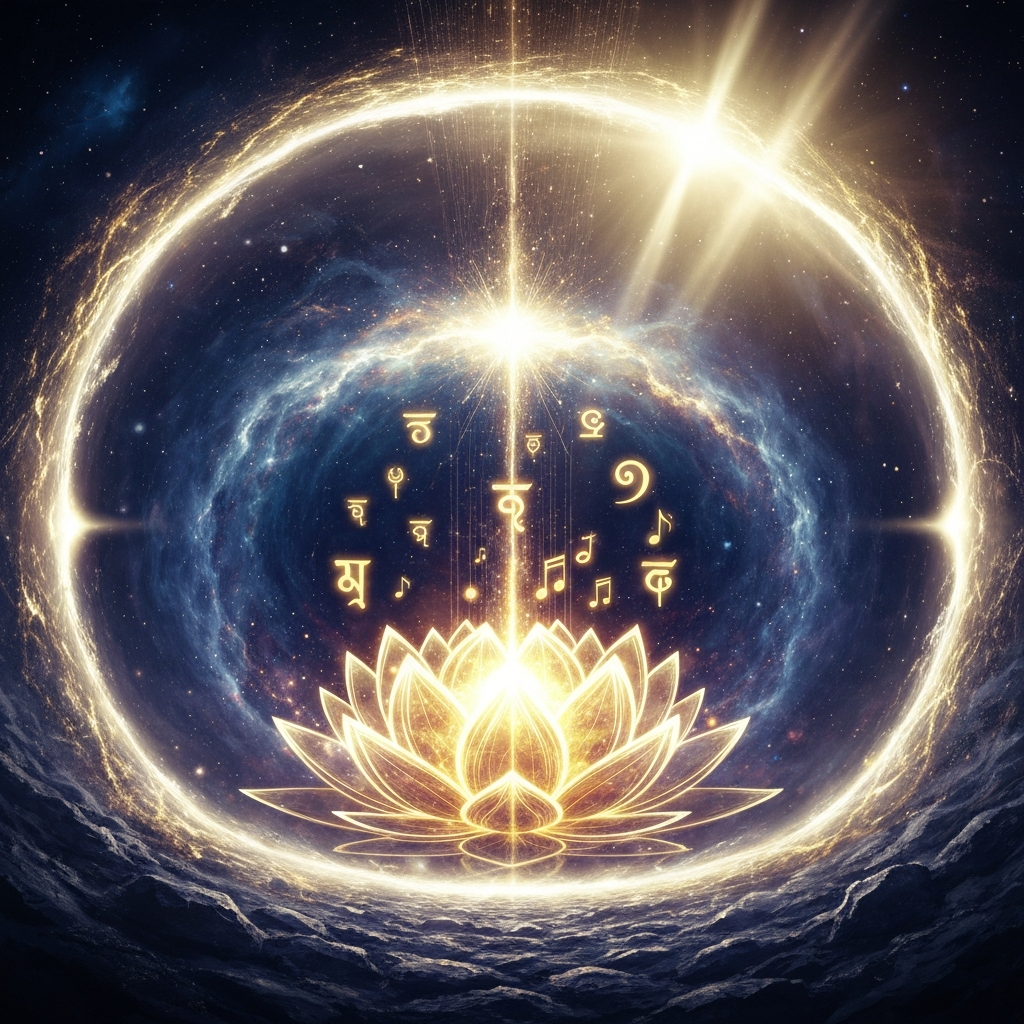
Brahmā & Sarasvatī: What Really Happened (Simple Guide)
Promise in one line: In 7 minutes, you’ll know why the viral claim about Brahmā and Sarasvatī is wrong, and how the scriptures actually explain it—in simple words.
TL;DR (Too Long; Didn’t Read)
- Sarasvatī = Knowledge/Speech. In Bhāgavata 3.12, she appears from Brahmā’s mouth → a symbol for speech/knowledge, not a physical birth.
- No scandal happens. A brief bad thought arises, the sons warn, and Brahmā drops that body → the story condemns the thought.
- Another Sarasvatī exists. In Brahma‑Vaivarta 35, Brahmā later receives Bhāratī/Vāgeśvarī in Goloka. Do not mix these two Sarasvatīs.
- Metaphors are normal. Think Sun + Dawn (Uṣā) as “father/daughter” in poetry—not literal.
- Big picture: These are teaching stories about ethics and creation, not gossip.
The claim you keep seeing online
Some posts say: “Brahmā wanted his daughter Sarasvatī.” This comes from pulling one line out of a long chapter and ignoring the lesson that follows.
Truth: The chapter teaches the opposite—that even a wrong intention must be stopped, and the hero rejects it.
What the Bhāgavata really says (super short)
Chapter: Bhāgavata Purāṇa, Canto 3, Chapter 12
What happens:
- Creation phase: Different powers appear from Brahmā’s cosmic body.
- Sarasvatī appears from the mouth → speech/knowledge symbol.
- Later, human sex‑based procreation (called mithuna‑dharma) is introduced. So Sarasvatī’s appearance comes before any talk of human reproduction.
- A bad desire flashes; sons (led by Marīci) speak up: “This is wrong.”
- Brahmā rejects it and abandons that body (it becomes darkness). Moral: even thinking of something wrong is not okay.
Key idea: The story is about ethics and self‑control, not about a scandal actually happening.
Wait—why do some books say “Brahmā married Sarasvatī”?
Because there’s another Sarasvatī in a different text: Brahma‑Vaivarta Purāṇa, Chapter 35.
- She is called Bhāratī / Vāgeśvarī.
- Signs you’ll recognize: white dress/complexion, vīṇā, book, teaching hand pose.
- This is not the same as the mouth‑manifest Sarasvatī of Bhāgavata 3.12. Same name, different context.
Why do scriptures speak like this?
Because they use metaphors to teach big ideas.
Example from a classic scholar (Kumārila Bhaṭṭa): The Sun is called father of Dawn (Uṣā) and also “joins” her with red rays. It’s poetry to explain nature, not a human family story.
So when a text says “from the mouth,” think “from speech/knowledge,” not biology.
A quick science‑style view (Sāṅkhya 101)
- Puruṣa + Prakṛti (Consciousness + Nature) → first thing that shows up is Mahat (big intelligence).
- Sarasvatī stands for intelligence and speech.
- Brahmā stands for cosmic mind/creativity.
Put simply: Mind creates. Knowledge appears. That’s the idea.
Glossary (plain English)
- Sarasvatī: Goddess of knowledge, speech, arts.
- Brahmā: Creator aspect; think cosmic engineer.
- Mithuna‑dharma: Sex‑based procreation (for humans).
- Utpannā: Appeared/manifested, not “born like a human baby.”
- Upacāra (metaphor): Fancy word for figurative language.
- Bhāratī/Vāgeśvarī: Another name/form of Sarasvatī in another text (Brahma‑Vaivarta).
Quick answers (FAQ)
Q1: Did Brahmā do something wrong with Sarasvatī?
A: No. The text condemns the thought and shows Brahmā rejecting it.
Q2: Why does Sarasvatī come from the “mouth”?
A: It means knowledge/speech—it’s a symbol, not biology.
Q3: Why are there two Sarasvatīs?
A: Different texts, different contexts. Names repeat in Purāṇas.
Q4: So are Purāṇas “just stories”?
A: They’re teaching stories—about how the world works and how to live well.
For your notes (copy & keep)
- Bhāgavata 3.12: creation steps, Sarasvatī = speech, warning + rejection of bad thought.
- Brahma‑Vaivarta 35: Bhāratī/Vāgeśvarī in Goloka (the worshipped Sarasvatī).
- Kumārila’s tip: don’t force metaphors to be literal.
- Big idea: Knowledge is sacred. Thoughts matter.
Author
VedaSeek Team — We turn tough Sanskrit ideas into friendly explainers for new readers.
Suggested image
A simple sunrise over a lotus and an open book. Alt: “Knowledge (Sarasvatī) rising like the dawn.”
JSON‑LD (Article + FAQ)
Want a classroom one‑pager or a short reel script based on this? Reply “YES” and tell me your audience age.